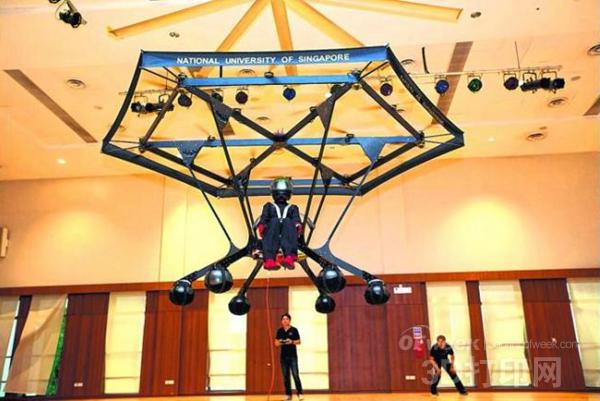Singaporean students develop single-person aircraft with 3D printing
The sky is always attractive, and it is a dream of many people to fly freely like birds in the sky. Recently, a group of college students at the National University of Singapore, with the help of 3D printing technology , developed a personal aircraft "Snowstorm".
On December 2, 2015, the National Day University of Singapore (NUS) Cai Tianbao Auditorium held a test flight of the "Snowstorm" indoor single-person aircraft. This is the first indoor electric single-person aircraft in Southeast Asia, which was developed by eight NUS students in 11 months.
The "Snowstorm" can carry 70 kilograms and fly for 5 minutes. Because it is electrically driven, the carbon emissions during the flight are extremely small. It guarantees passenger safety through seat belts, propeller guards and original spherical landing gear.

The "Snowstorm" aircraft will take several years to go into commercial use. Students plan to use it as an indoor entertainment program, allowing passengers to experience a short sense of suspension. Wang Yuxi, a third-year student in the Department of Electronic Engineering, said: "The reason why it was named 'Snowstorm' is because the aircraft has a hexagonal snowflake shape, and the huge airflow generated during the flight is like a storm."
Shawn Sim, a third-year student in the Department of Mechanical Engineering, said: "The biggest challenge in designing the 'Snowstorm' is to maintain a proper thrust-to-weight ratio. When designing, we always take into account the density and characteristics of the design material. When making the landing gear, We even use 3D printing technology to make the most suitable accessories.†Students first design a 1:6 model and then physically assemble them according to the model.
It is understood that the components of the "Snowstorm" include the engine, the propeller and the inflatable landing gear. In order to ensure the stability and safety of their flight, the students designed three independent power supplies, so that even if the other two power supplies fail, each power supply can independently power the entire aircraft (the total power of the three power supplies is 52.8kw). Each launch drives a 76 cm propeller. Most of the aircraft is made of aluminum and carbon fiber, and many parts, including the landing gear, are 3D printed.

Joerg Weigl, one of the guiding professors, said that they plan to add solar panels to the aircraft in the future to make the aircraft more energy efficient.
The "Snowstorm" project was sponsored by the Frogworks program. Frogworks is a joint initiative of the NUS School of Engineering and the NUS Scholarship Program to encourage students to design and develop clean leisure technologies.
Jiangmen Kuaibu Manufacturing Co.,Ltd , https://www.kuaibuhardware.com